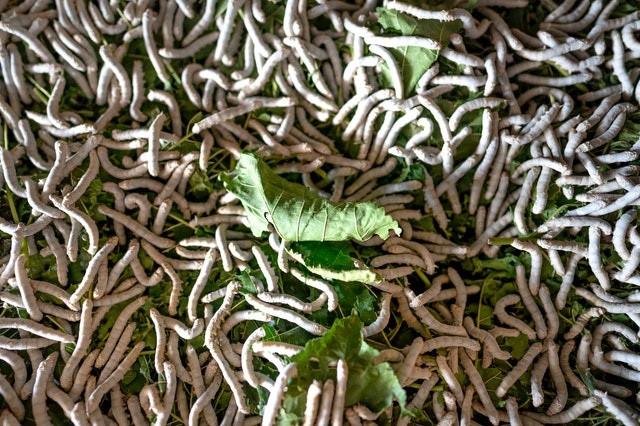
Nature can be mysterious. You can find worms that do not have a butt dwelling in the deep sea, while in reef-dwelling worms that are segmented whose bodies branch like a tree starting from its head, every branch ends in a different butt.

Ramisyllis multicaudata
This species is known as Ramisyllis multicaudata, and it's likely the most mysterious worm on the planet. In 2006, It was initially discovered, and in 2012 it was formally described. Now, for the first time, experts have carried out a comprehensive study of its anatomy, finally disclosing more about this mustifying creature - and bringing up even more questions about how it lives its strange life.
Maite Aguado, an evolutionary biologist of the University of Göttingen in Germany said: "Our research puzzled out some of the puzzles that these weird animals have constituted ever since the first branched annelid was found at the ending of the 19th century, although, there is still a long distance to cover in order to fully get the knowledge on how these enthralling animals inhabit the wild.
Manifestation of Introversion
"Ramisyllis multicaudata appears to be the very manifestation of introversion. It lives mutually in sea sponges to shallow depths of 66 feet (20 meters) in the waters off Australia's north coast, its head embedded deep in its living home. As it develops, its hairy branching body, with diameters approximately 1 millimeter, expands along different channels in the sponge.
Only the extreme of those branches - the many posteriors of the worm - comes out, giving the sponge an appearance that is slightly patterned. It's a bizarre existence and one that has puzzled scientists. The worm is very delicate and easily breaks apart, making it very difficult to cut open and study.
However, after meticulous work using combined techniques including X-ray computed microtomography, electronic histology, immunohistochemistry, confocal laser microscopy, and optical microscopy, an international team of scientists has made effort to study every detail of the R. multicaudata's anatomy.
Three-dimensional Images of the Worms
By analyzation of the worm covered within the sponge (host), they managed to reveal that the whole, complicated, branching worm is enormous, extensively filling the canals and cavities of the sponge. They also got three-dimensional images of the worms and their internal anatomy, and also the labyrinthine sponges they see as their home.
They had the ability to confirm that when the body of the worm divides and branches for the first time, the same as its internal organs. When the digestive tracts split, and the guts of the worm run through the new branches and also the old. Intriguingly, this distinctiveness requires an anatomical structure that has never been seen in any other animal - what the experts have named muscle bridges.
These appear wherever the worm divides, crossing between the split organs. When reproduction is about to take place, the worm makes use of its branches to do so. A branch tip will develop with gametes inside, known as a stolon; the stolon will disconnect from the parent worm to swarm and reproduce with other stolons before it dies, while the parent continues living.
Related Article : Worm and Movement: The Wiggle Holds Brain Clues?
For more news, updates about worms and simlar topics don't forget to follow Nature World News!
© 2025 NatureWorldNews.com All rights reserved. Do not reproduce without permission.





